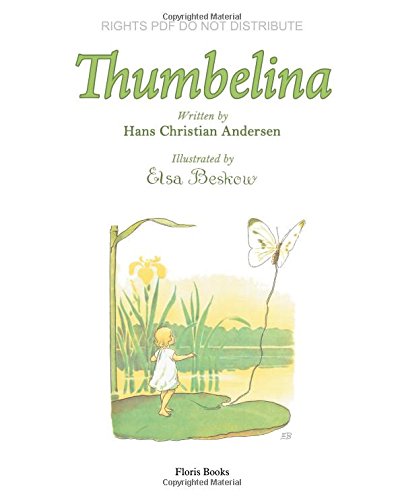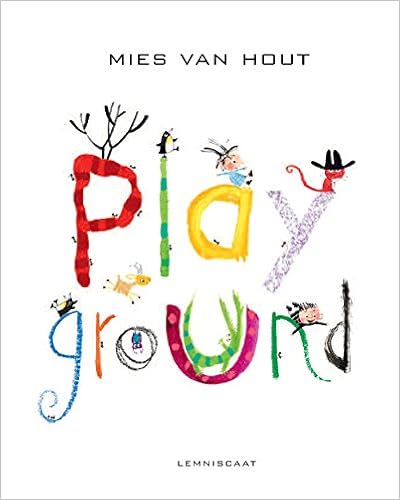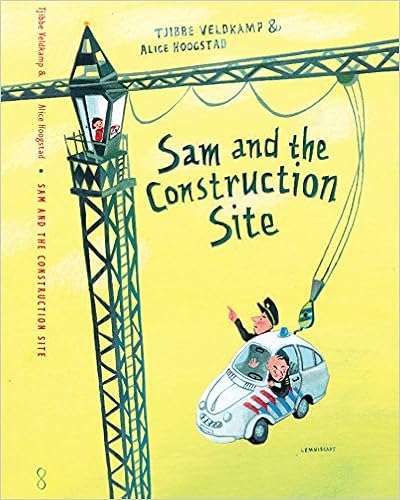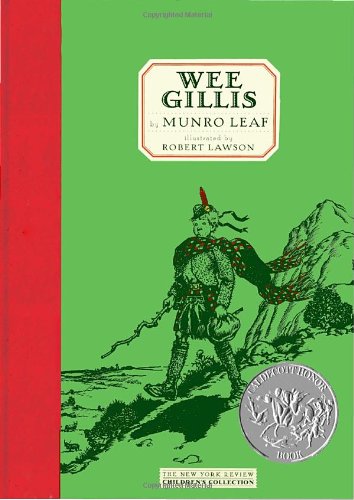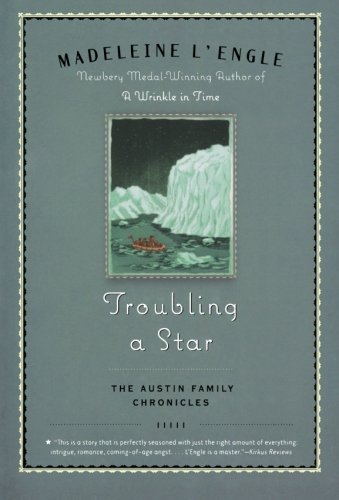Jan Balet “was a German/US-American painter, graphic artist and illustrator. Affected by the style naive art he worked particularly as a graphic artist and as an Illustrator of children’s books. Besides this he painted pictures in the style of naive art. Referred to as a “naïve” painter, his works exhibit a dry wit and refreshingly candid, satirical view of life.” ~Wikipedia, Jan Balet.
 Amos and the Moon by Jan Balet was first published in 1948. The AMMO Books reprint edition that I received for review is certainly a lovely re-gift to today’s children from the golden age of children’s literature. The story is reminiscent of James Thurber’s Many Moons, which won a Caldecott Medal in 1944. In Thurber’s story, the ailing Princess Lenore wants the moon, and her father, the king, directs various servants and courtiers to get it for her. In Balet’s picture book, Amos sees the moon in his mirror, believes it belongs to him, and goes out to find it himself when it disappears the next day. Various vendors and storekeepers give him gifts–a piece of ice, a horse, a watch, a moon-shaped cookie—- as he searches, but none of his friends can give Amos “his moon”. Finally, Joe Ming, the Chinese laundryman, wisely tells Amos, “No one has the moon always–just once in a while.”
Amos and the Moon by Jan Balet was first published in 1948. The AMMO Books reprint edition that I received for review is certainly a lovely re-gift to today’s children from the golden age of children’s literature. The story is reminiscent of James Thurber’s Many Moons, which won a Caldecott Medal in 1944. In Thurber’s story, the ailing Princess Lenore wants the moon, and her father, the king, directs various servants and courtiers to get it for her. In Balet’s picture book, Amos sees the moon in his mirror, believes it belongs to him, and goes out to find it himself when it disappears the next day. Various vendors and storekeepers give him gifts–a piece of ice, a horse, a watch, a moon-shaped cookie—- as he searches, but none of his friends can give Amos “his moon”. Finally, Joe Ming, the Chinese laundryman, wisely tells Amos, “No one has the moon always–just once in a while.”
It’s a gentle, old-fashioned kind of story, and the illustrations are delightful. Mr. Balet was first and foremost an artist, and the pictures of the various shops that Amos visits in search of his moon will interest and appeal to anyone, young or old, who is inspired by detailed scenes, exquisitely rendered. The illustrations sort of remind me of Norman Rockwell or Currier and Ives or even the Impressionists like Manet, but Balet has his own style and subject matter. There is a European feel to the story and to the pictures, perhaps because of the many immigrants and ethnic groups that Amos encounters on his quest, even though the story is obviously set in an English-speaking, probably American, city.
AMMO Books has reprinted another of Balet’s picture books, The Five Rollatinis, which is a circus story and a counting book combined. Some of his other books, both those he illustrated that were written by other authors and those he wrote himself, are available on Amazon used. I really appreciate the publishers who find these old, treasured titles and bring them back into print for a new generation.
